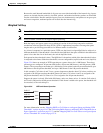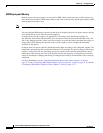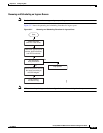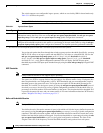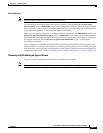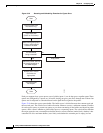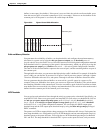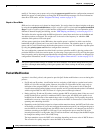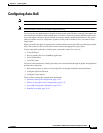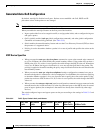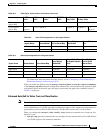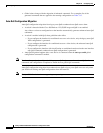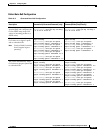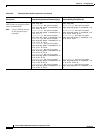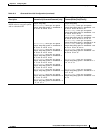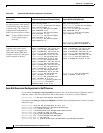
33-21
Catalyst 2960 and 2960-S Switch Software Configuration Guide
OL-8603-09
Chapter 33 Configuring QoS
Configuring Auto-QoS
Configuring Auto-QoS
Note To use auto-QoS, the switch must be running the LAN Base image.
Note Catalyst 2960-S switches do not support ingress queueing.
You can use the auto-QoS feature to simplify the deployment of QoS features. Auto-QoS determines the
network design and enables QoS configurations so that the switch can prioritize different traffic flows.
It uses the ingress and egress queues instead of using the default (disabled) QoS behavior. The switch
offers best-effort service to each packet, regardless of the packet contents or size, and sends it from a
single queue.
When you enable auto-QoS, it automatically classifies traffic based on the traffic type and ingress packet
label. The switch uses the classification results to choose the appropriate egress queue.
You use auto-QoS commands to identify ports connected to these Cisco devices:
• Cisco IP Phones
• Devices running the Cisco SoftPhone application
• Cisco TelePresence
• Cisco IP Camera
You also use the commands to identify ports that receive trusted traffic through an uplink. Auto-QoS then
performs these functions:
• Detects the presence or absence of auto-QoS devices through conditional trusted interfaces.
• Configures QoS classification
• Configures egress queues
These sections contain this configuration information:
• Generated Auto-QoS Configuration, page 33-22
• Effects of Auto-QoS on the Configuration, page 33-32
• Auto-QoS Configuration Guidelines, page 33-32
• Enabling Auto-QoS, page 33-33



